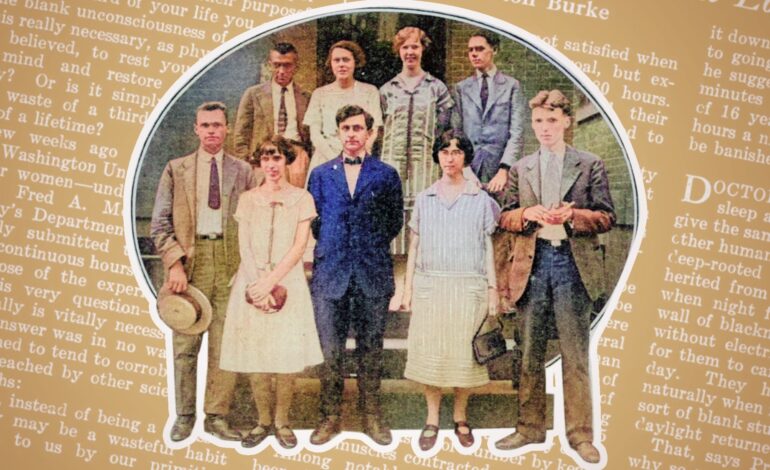Seven Students Endure 60 Hours Without Sleep for 1925 Experiment

In a remarkable experiment in November 1925, seven undergraduate students at George Washington University (GWU) managed to stay awake for over 60 hours. This groundbreaking study, led by psychology professor Frederick August Moss, aimed to explore whether sleep was a “tragic waste” of time. While the experiment provided insights into the effects of sleeplessness, it also marked a significant chapter in the ongoing understanding of sleep’s role in human health.
Moss’s research came at a time when concern about high dropout rates in medical schools was prevalent. He developed the Medical College Admission Test (MCAT), originally called the Scholastic Aptitude Test for Medical Students, to assess readiness and improve retention. The MCAT’s introduction set the stage for future standardized exams, influencing countless students’ preparations, often resulting in sleepless nights.
On a late-August weekend in 1925, Moss gathered the seven volunteers in Foggy Bottom, GWU’s vibrant neighborhood located between the White House and Georgetown. Their mission was straightforward yet challenging: to remain awake for at least 60 hours while undergoing various tests designed to measure their vital signs, reflexes, and cognitive abilities. Among the participants was Louise Omwake, a 17-year-old already excelling as a student and athlete, and Thelma Hunt, an ambitious classmate with aspirations in psychology.
To keep their spirits high and resist fatigue, the group engaged in activities such as playing baseball and singing. Their determination paid off, and they successfully completed the challenge. Newton Burke, a writer for Popular Science, summarized Moss’s preliminary findings, suggesting that excessive sleep, similar to overindulgence in alcohol, could be detrimental to mental and physical activity.
The 1920s marked a cultural fascination with sleep and sleeplessness, fueled by the rapid industrialization of America. Inventor Thomas Edison, a notable figure of the era, famously stated that he thrived on merely four hours of sleep each night. Yet, Burke remained skeptical of the conclusions drawn from Moss’s study and others of the time, asserting that no reliable method existed for the average person to significantly reduce sleep without adverse health effects.
Scientific understanding of sleep has evolved significantly over the past century. Evidence now shows that sleep is not a passive state but rather an active process essential for health. Research has revealed that during sleep, the brain consolidates memories, repairs itself, and eliminates toxins linked to diseases such as Alzheimer’s. It also plays a critical role in immune function and hormone regulation.
Despite the newfound appreciation for sleep, recent studies have indicated that both insufficient and excessive sleep may pose health risks. Epidemiological data suggests a U-shaped relationship between sleep duration and health outcomes, indicating that too much sleep can be as detrimental as too little. While the optimal sleep range for adults is generally between seven to nine hours, excessive sleep could signal underlying health issues, including chronic illness or mood disorders.
In addition to duration, sleep regularity has emerged as a crucial factor for overall health. Variability in sleep patterns has been linked to increased risks of obesity, cardiovascular problems, and psychological disorders. Good sleep hygiene practices, such as maintaining consistent sleep schedules and creating a conducive sleep environment, are essential for fostering better health outcomes.
Upon completing their 60-hour challenge, the students reported no significant difficulty falling asleep, contradicting common beliefs about the effects of prolonged wakefulness. Their experience highlights the complexities of sleep and its impact on human performance, a topic that remains relevant today.
As we reflect on this century-old experiment, the contributions of participants like Thelma Hunt, who later became a psychology department chair at GWU, remind us of the enduring legacy of their work. Hunt’s assertion that her high energy levels stemmed from her physiological makeup underscores the individual differences that influence sleep needs and health outcomes.
In conclusion, the 1925 sleeplessness study not only challenged contemporary notions of sleep but also paved the way for ongoing research into the mysteries of sleep. Today, we recognize sleep as a vital investment in health and quality of life, affirming that while the quest to understand sleep continues, it is far from a “tragic waste.”






